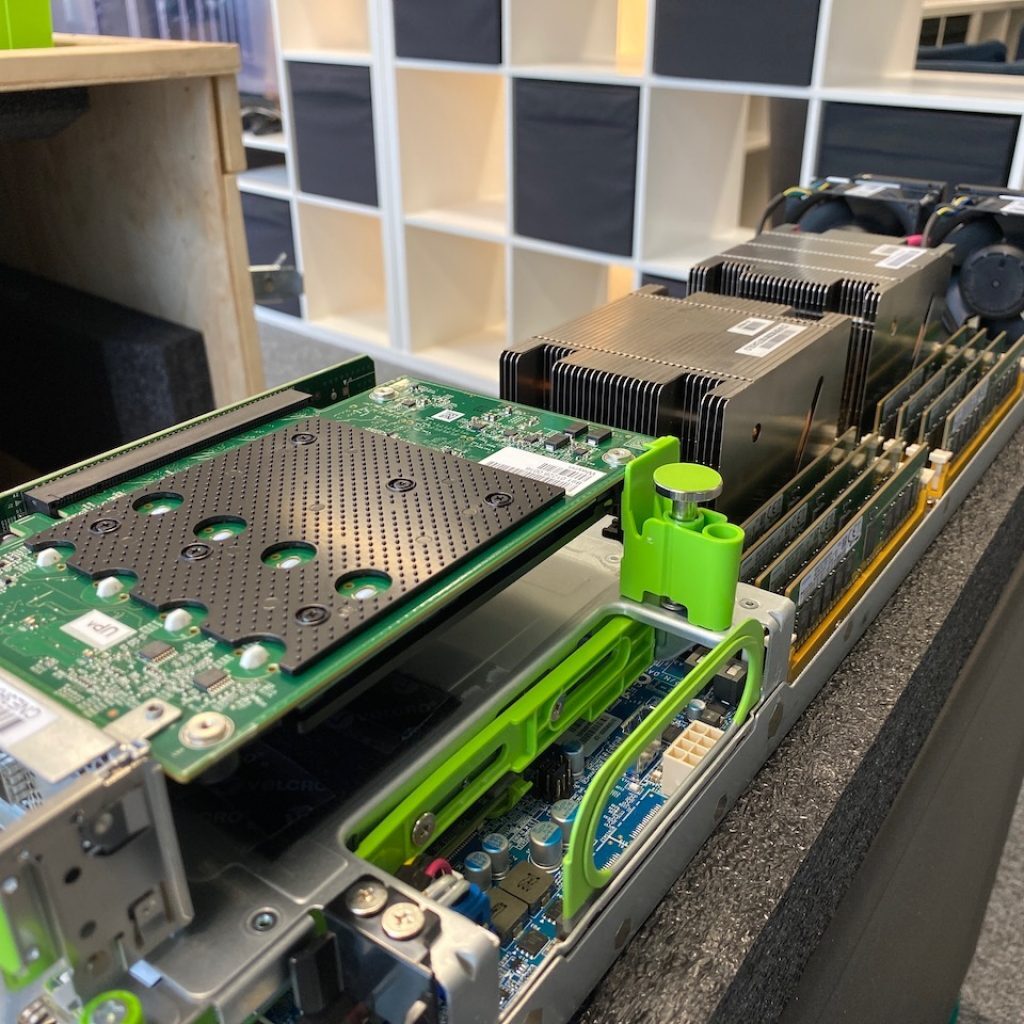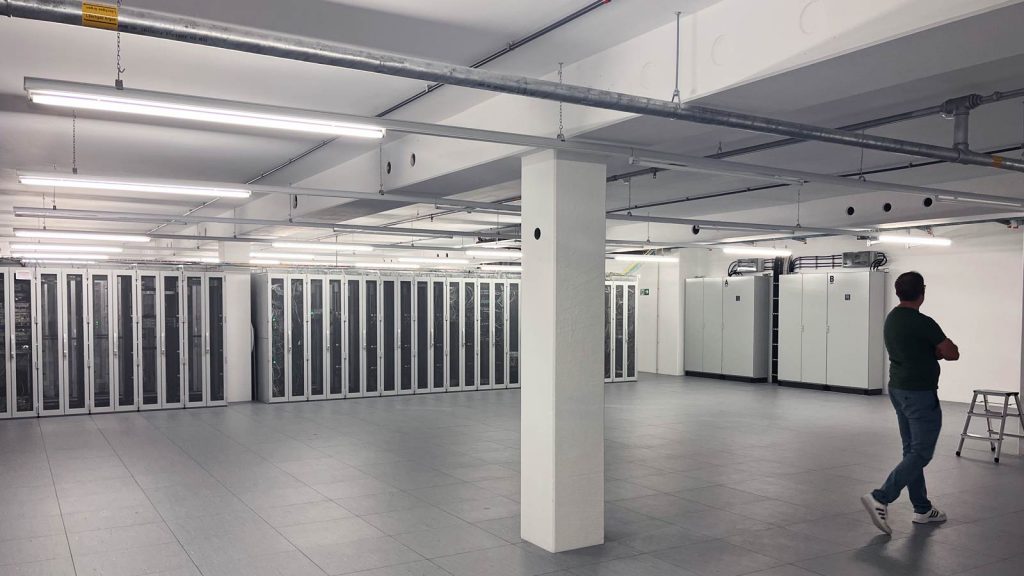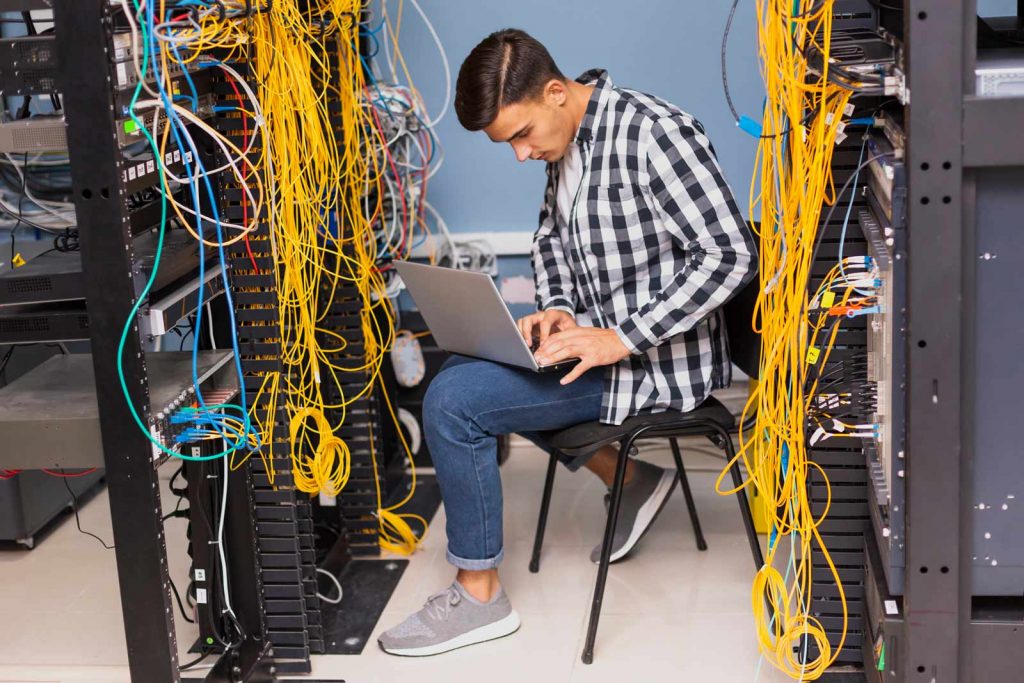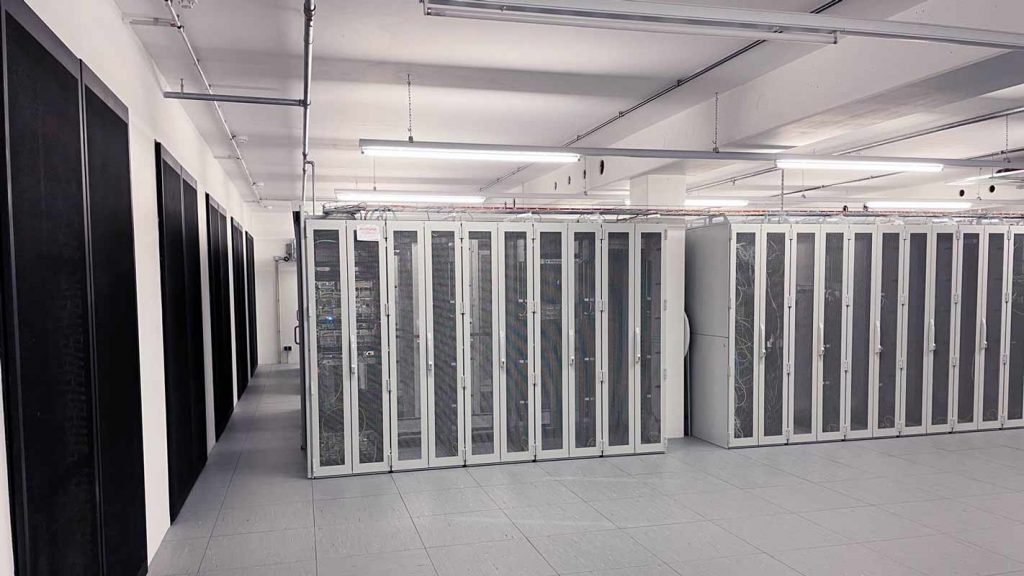After we had already dealt more intensively with the OpenCompute Project (here the link to our article what OCP is), it was time to put the OCP hardware through its paces ourselves. For this purpose, our partner Infraburst a so-called Fast Start Rack has been made available. This is a mobile rack that is small enough to fit under a desk and can accommodate up to four OpenCompute servers. It is equipped with a central power supply and a small switch and router. This allows easy testing of OCP hardware without the need for a large test setup in the data center.
In the following video, we have documented the "unboxing" and also show a first look at the OCP hardware:
Basically, an OCP server resembles a standard 19″ server, of course, since the individual components such as CPU, RAM, network cards, etc. are the same. But they differ significantly in structure and arrangement. While standard 19″ servers use the full width of a 19″ rack (i.e. 48.26cm), OCP servers have a narrower design, so that three servers on one level (open unit) fit side by side in a 21″ open compute rack (53.34cm wide). It is important to note that both racks, i.e. standard 19″ and OCP 21″ are only 60cm wide from the external dimensions.
Power-saving, efficient cooling
Another difference is that a classic server case is largely dispensed with. The individual components such as the mainboard, PCI risers, CPUs, etc. are only mounted on trays or drawers. These trays are not enclosed by a case lid. Only above the CPUs or their heat sinks is a plastic cover that optimizes the air flow for cooling the CPUs. The heatsinks for the CPUs are also significantly larger than in most 19″ servers, especially those in 1U servers. The two fans on the back of the server are 80mm, which is twice the size of the fans in most 19″ servers. This allows the fans to run slower or more sparingly to provide the same cooling performance.

Simplified tool-free working
In addition to optimized cooling, the Facebook development team also made sure that the OCP servers could be worked on completely without tools when designing them. All replaceable parts can be removed by flipping small fastening levers or with the help of thumbscrews. In addition, all these points are color-coded (green), which further facilitates the work of administrators.
The front view of an OCP server also shows another difference. All connections are located on the front of the server. A bezel has been omitted. On the one hand, this improves the air supply and also makes working on the server more pleasant, since you can work on the "cool" side of the server.

Conclusion
I hope we could show that there are significant differences between OpenCompute hardware and standard 19″ servers, primarily affecting the efficiency and sustainability of the server. For example, omitting a chassis saves a lot of weight and ultimately material, as well as improving airflow. Reducing the number while increasing the size of the fans, as well as the general design and use of central power supplies in the rack, have a strong positive impact on the energy efficiency of the OpenCompute servers. Tests, which we have also carried out in our own test environment, show that a potential power saving of 15-20% is possible. That is enormous!
Find out how we tested and what energy savings we were able to measure at different loads of the servers in our next article.
If you are interested in OCP hardware or OCP servers please contact us. contact to once our Fast Start Rack get your hands on it yourself and test it.



